

Wind turbine certification is a crucial procedure in the wind power field that ensures wind wind turbines satisfy details requirements for safety, performance, and honesty. This considerable certification process involves comprehensive testing and evaluation of wind turbine layouts, components, and making treatments to validate consistency with around the world standards and laws. The primary objective of wind turbine certification is to provide guarantee to stakeholders, including task designers, investors, and regulative bodies, that a particular wind turbine design appropriates for its assigned usage and can endure the ecological troubles it will definitely take care of throughout its operational life time. Certification helps reduce risks gotten in touch with wind energy work and promotes the total top quality and integrity of wind turbine modern technology. There are a number of type of wind turbine certifications, with kind certification being the most usual and thorough. Kind certification validates that a specific wind turbine layout is developed, made, and checked out according to suitable requirements and criteria. This procedure typically consists of various evaluation components, such as design basis evaluation, wind turbine format assessment, kind evaluating, creating assessment, and last analysis. The design basis assessment analyzes the environmental and operational problems under which the wind turbine is anticipated to operate. This includes components such as wind prices, turbulence, temperature level selections, and other site-specific issues. The wind turbine design evaluation has a look at the turbine's architectural, mechanical, and electrical components to make certain they fulfill the required requirements and can withstand the anticipated loads and tensions. Kind screening is a critical component of the certification process, entailing physical examinations on a prototype or producing tool of the wind turbine. Grid Connection Standards These tests examine countless aspects of the turbine's efficiency, containing power end result, noise exhausts, and safety features. Heaps measurements are similarly performed to validate the accuracy of the design computations and simulations. The producing examination assurances that the production treatments and quality control procedures are adequate to on a regular basis create wind generators that fulfill the certified format needs. This could '' involve factory assessments and audits of the manufacturer top quality keeping an eye on system. In addition to kind certification, part certification is furthermore provided for significant wind turbine parts such as blades, transmissions, and generators. Element certification sticks to a similar process to kind certification however focuses on private components as opposed to the whole turbine system. For tiny wind generators, which are normally made use of in distributed generation applications, certification procedures could be slightly various yet still objective to confirm efficiency, safety and security and safety, and longevity. Little wind turbine certification typically involves evaluating to specific demands established for smaller sized systems, such as those described by the International Electrotechnical Compensation(IEC)or national criteria companies. Wind cattle ranch certification is another essential element of the wind power industry, especially for enormous projects. This process evaluations the whole wind ranch, including the internet site troubles, turbine viability for the specific area, help frameworks, and electrical systems. Wind ranch certification help guarantee that the task in its entirety meets security and safety and efficiency demands and can be specifically important for offshore wind cattle ranches, which experience unique difficulties because of their marine setting. Certification bodies play a crucial function in the wind turbine certification procedure. These companies are normally accredited by nationwide or worldwide authorities to do certification tasks. Popular certification bodies in the wind power field include DNV GL, TÜV SÜD, and ClassNK, among others. These organizations usage specialists in countless areas connected to wind energy modern-day technology to perform comprehensive analyses and tests. Wind Energy The requirements used for wind turbine certification are largely developed by worldwide companies such as the International Electrotechnical Commission (IEC)and the International Company for Standardization(ISO). The IEC 61400 series of criteria is particularly critical for wind turbine certification, covering various facets of wind turbine design, screening, and operation. It's important to keep in mind that wind turbine certification needs can range countries and areas. While around the world requirements give a typical structure, some countries might have included or certain demands that requirement to be pleased. As an example, in the USA, compliance with criteria established by Underwriters Laboratories (UL) might be essential without a doubt electrical aspects of wind generators. The certification procedure can be prolonged and expensive, yet it provides considerable benefits to manufacturers and the industry all at once. Qualified wind generators are much more potential to be accepted by task developers and capitalists, as certification decreases the regarded threat connected with the modern-day technology. In addition, certification can aid vendors figure out and deal with possible issues early in the growth procedure, perhaps saving expenses in time. As wind turbine innovation remains to development, with bigger turbines and more advanced designs being created, certification processes need to likewise adjust. This consists of establishing brand-new screening techniques and updating criteria to address arising modern-day technologies such as drifting overseas wind generators. Wind turbine certification is an in-depth and vital procedure in the wind power sector. It makes sure that wind generators meet high standards of security and safety and security, efficiency, and reliability, hence
sustaining the advancement and stability of wind power as an important part of the worldwide renewable energy mix. By offering a typical framework for assessing wind turbine development, certification assists establish confidence among stakeholders and adds to the basic success and sustainability of wind power jobs worldwide.
Obtaining wind turbine certification is a substantial treatment developed to assurance that wind generators satisfy specific needs and standards, ensuring their safety and security and security, efficiency, and integrity. This detailed introduction outlines the crucial demands for acquiring wind turbine certification, highlighting the worth of each action in the procedure. Type certification is a vital requirement for wind generators, confirming that they are created, made, and evaluated to adhere to particular criteria or standards. This component reviews the design anticipations and standards used in developing the wind turbine.
Empower your wind energy projects with certified wind turbines! 🌍💨 Our comprehensive certification ensures top-notch safety, performance, and reliability, helping you build a sustainable future with confidence.https://t.co/Xa7LZ7nRLC
— Turbine Training And Operation (@turbinetraine) August 20, 2024
Wind turbine certification plays an essential feature in the renewable resource market, offering warranty of safety and protection, efficiency, and integrity for wind power tasks worldwide. As the worldwide need for clean energy continues to grow, certification has become a crucial treatment that earnings vendors, programmers, capitalists, and customers alike. At its core, wind turbine certification is a detailed analysis treatment that verifies that a turbine model satisfies particular requirements and requirements. This procedure normally consists of layout evaluation, kind testing, creating evaluation, and last assessment. By obtaining certification, wind turbine vendors show that their things have gone through extensive evaluating and comply with around the world criteria, such as those set by the International Electrotechnical Settlement (IEC). Among the main benefits of wind turbine certification is the enhancement of security and safety. Qualified wind generators have been completely evaluated for architectural integrity, electric systems, and control devices, ensuring that they can stand up versus different environmental issues and run safely throughout their lifespan. This focus on safety not simply secures employees and surrounding communities yet also aids to develop public rely upon wind power innovation. Certification also plays an important function in performance verification. With basic screening treatments, qualified generators offer reputable data on power output, effectiveness, and power manufacturing. This details is important for job developers and investors, enabling them to make enlightened decisions and exact price quotes concerning the economic security of wind energy jobs. Certified efficiency info likewise helps in securing moneying, as funding providers and capitalists have much better positive self-image in the reliability of certified generators. For manufacturers, certification supplies an affordable advantage in the international industry. As the wind power market ends up being increasingly worldwide, having licensed items authorizations suppliers to get in brand-new markets extra conveniently. Lots of countries and regions demand certification as a need for turbine arrangement or to obtain rewards and aids. By obtaining certification, makers program their dedication to top quality and conformity with worldwide demands, which can be a considerable consider winning contracts and broadening market share. The certification procedure furthermore drives improvement and regular improvement in wind turbine contemporary technology. As makers function to satisfy and exceed certification requirements, they usually create brand-new modern technologies and enhance existing designs. This continual development causes a lot more effective, trustworthy, and economical wind wind turbines, undoubtedly benefiting the entire renewable energy market. Certification contributes to the overall integrity and resilience of wind power projects. Qualified wind turbines have gone through thorough screening for durability and performance under many conditions, which equates to reduced downtime and upkeep expenses over the life of the task. This enhanced integrity is specifically vital for overseas wind farms, where repair and maintenance can be hard and pricey.
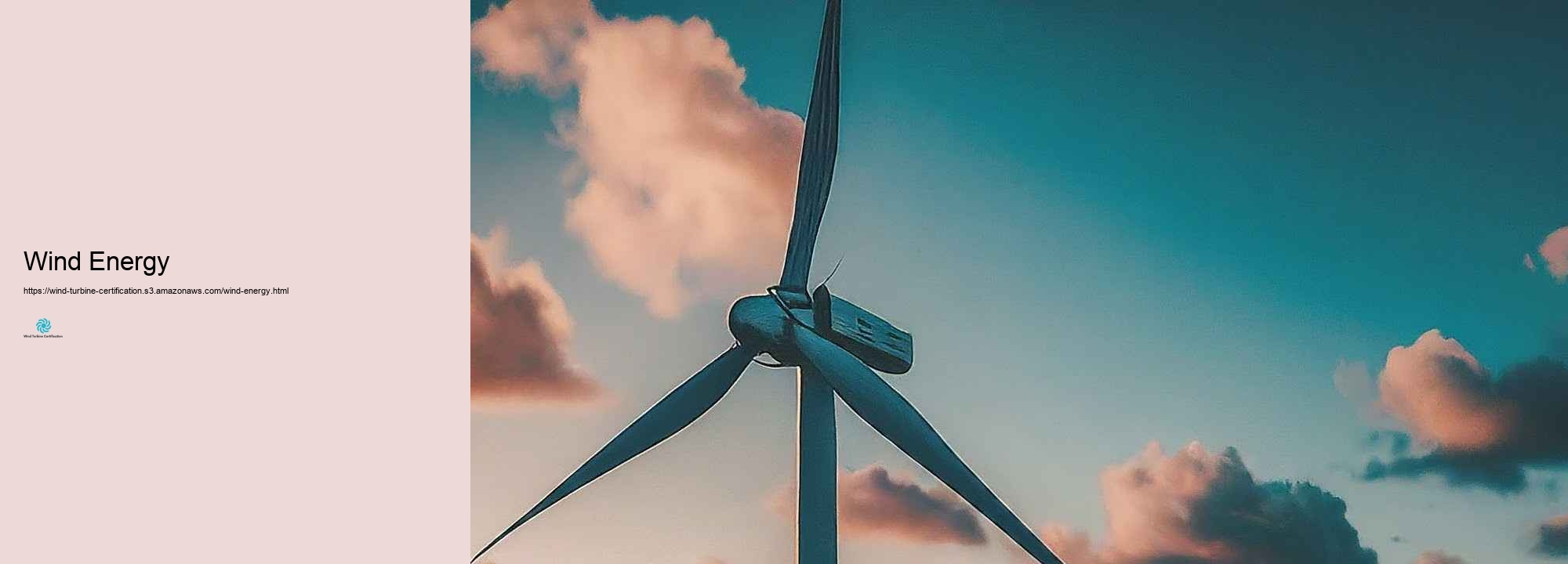
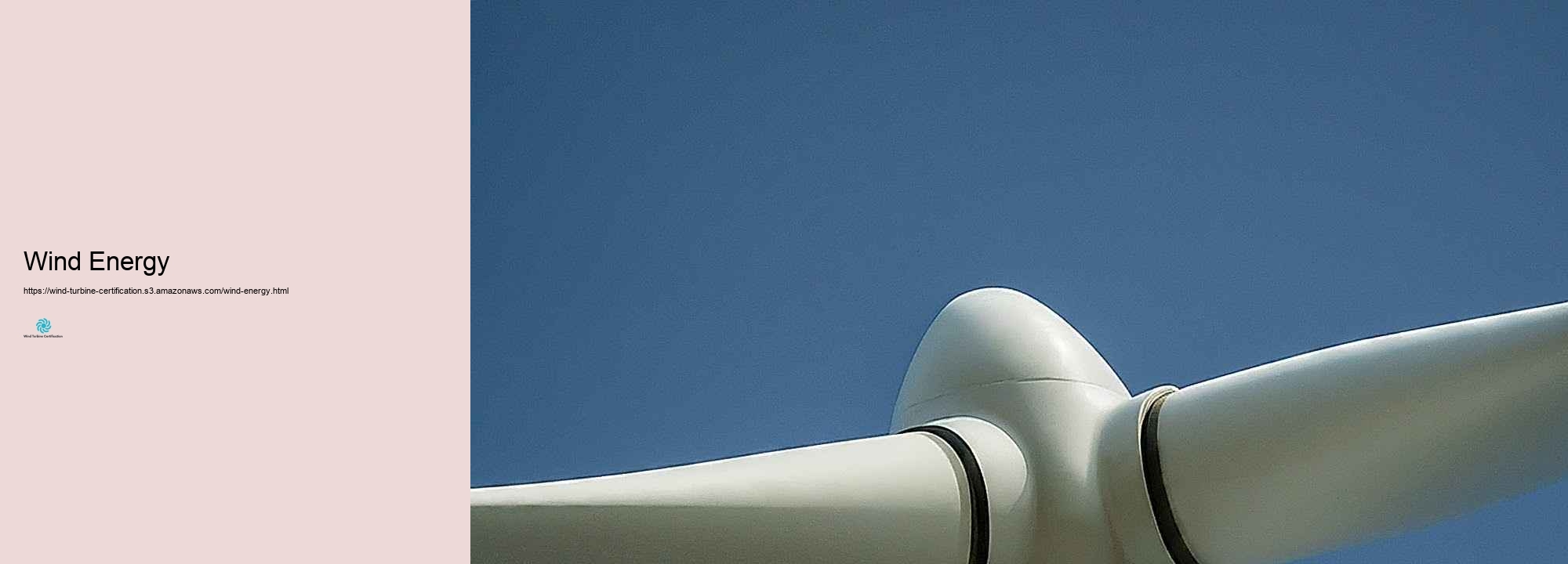
Wind turbine certification is a detailed process that ensures wind turbines are made, created, and reviewed to fulfill specific requirements and needs. This certification is crucial for distributors to show the high quality, safety and safety and security, and performance of their products. The procedure typically consists of countless necessary actions, each playing a vital obligation in the overall certification. The first step in the wind turbine certification procedure is the style basis examination. Blade Repair Certification This initially stage involves taking a look at the standard assumptions, requirements, and methods used in the turbine'' ' ' s layout. Certification bodies like TUV, DNV-GL, or Bureau Veritas examine the layout basis to make sure it lines up with market standards such as IEC 61400-22. This action is critical as it establishes the structure for all doing well exams and examinations. Abiding by the design basis examination, the next action is the style examination. In this phase, the certification body verifies that the real format of the wind turbine sticks to the authorized design basis. This includes an in-depth examination of all technical aspects of the turbine, including architectural components, electric systems, control systems, and safety features. The layout analysis makes certain that the turbine is theoretically with the capability of taking on the anticipated great deals and operating issues throughout its preferred life time. The producing evaluation is the third considerable step in the certification treatment. This phase focuses on examining the quality control systems and making treatments used to produce the wind turbine. Certification bodies conduct evaluations of producing facilities and examine top quality monitoring systems to guarantee that the generators are being produced constantly and in accordance with the certified layout. This action is vital for keeping the stability of the turbine from layout to making. Type screening is perhaps one of the most difficult and visible element of the certification process. This step includes a collection of area and research laboratory exams to verify the turbine's effectiveness, security, and dependability. Secret examinations include power effectiveness measurements, whole lots dimensions, blade examinations, and acoustic audio evaluations. These tests are conducted on a version of the wind turbine layout under certification. The results of these tests are important in validating the design calculations and seeing to it that the turbine performs as expected under different running troubles. Element certification can be an added action in the treatment, especially for essential elements like transmissions, blades, or generators. This involves separate testing and certification of these aspects, which can be particularly vital for substantial or detailed turbine formats. Component certification can aid streamline the general turbine certification procedure and offer additional assurance of reliability. The final assessment is the outcome of all previous actions. In this phase, the certification body reviews all the details, test results, and evaluations from the earlier stages. They review whether all demands have in fact been completely satisfied and if any sort of troubles identified during the procedure have in fact been suitably attended to . If every little thing is adequate, the certification body issues the last kind certification for the wind turbine design. It's essential to note that certification doesn ' ' t end with the issuance of the type certificate. Numerous certification systems include specifications for routine keeping track of and re-certification. This makes certain that the produced generators stay to fulfill the qualified style and top quality requirements with time. Producers might call for to undertake normal audits and potentially included screening to maintain their certification. For wind ranch tasks, there's commonly an included activity of task certification. This entails examining exactly how the licensed turbine variations will do in the particular conditions of a ready wind ranch site. Job certification takes into account variables like local wind problems, surface area, grid connection demands, and framework layouts. Throughout the certification treatment, clear communication in between the turbine supplier and the certification body is essential. Regular conferences and progression analyses aid guarantee that any kind of kind of troubles are determined and addressed immediately, preventing delays in the certification timeline. Manufacturers should certainly be prepared to provide considerable paperwork at each phase of the process. The timeline for wind turbine certification can vary dramatically depending upon the ins and out of the turbine layout, the readiness of the manufacturer, and the certain certification plan being complied with. It's not uncommon for the entire procedure to take 12-18 months or perhaps much longer for new or complicated designs. Expenditures related to certification can be considerable, containing charges for the certification body, expenses of model. design production for screening, and costs pertaining to the different evaluations and evaluations. However, these expenses are normally viewed as a needed financial investment in the wind energy field, as certification is often a prerequisite for market entrance, task moneying, and insurance coverage. It's worth noting that various markets may have specific certification needs. While international needs like IEC 61400-22 are commonly identified, some nations or regions might have added or changed needs. Manufacturers going for worldwide markets need to be experienced regarding these variations and may demand to get various accreditations. The certification procedure furthermore plays a crucial feature in the continuous renovation of wind turbine contemporary technology. The arduous evaluating and assessment typically bring about understandings that drive innovation and improve turbine effectiveness and stability. This cycle of certification and remodelling has been an important take into consideration the rapid innovation of wind energy innovation over the previous years. The wind turbine certification procedure is an extensive, multi-step trip that makes sure wind generators meet high criteria of safety and security, performance, and dependability. From initially layout analysis with to final kind screening and certification, each action plays an important obligation in verifying the turbine's abilities.
While the process can be exhausting and expensive, it gives essential guarantee to stakeholders in the wind power market, from makers and developers to financiers and regulatory authorities. As wind power continues to play a gradually vital function in the international power mix, the strenuous certification process continues to be a structure of the market advancement and success.
When it involves wind turbine solution specialist certifications, numerous commendable organizations offer programs that are widely acknowledged in the market. These certification bodies play a crucial feature in establishing and preserving requirements for wind turbine professionals, ensuring they have the needed capabilities and knowledge to feature firmly and efficiently in this quickly expanding area. Among one of one of the most obvious certification bodies is the American Wind Energy Company (AWEA). The AWEA products an in-depth Wind Turbine Expert Certification program that is extremely referred to in the market. This certification covers a huge variety of topics, consisting of safety procedures, electric systems, mechanical systems, and hydraulics. The AWEA certification procedure typically includes completing a training training course and passing a comprehensive evaluation. Various firms in the wind power market favor or demand specialists to hold this certification, making it a beneficial credential for profession development. One more well-respected certification body is the International Wind Organisation (GWO). While not specifically focused on service technician certification, the GWO establishes international requirements for security training in the wind industry. Their Criterion Safety Training (BST) program is thoroughly acknowledged and often called for by business. It covers essential abilities such as emergency treatment, fire understanding, working at elevations, and sea survival (for offshore wind solution professionals). Countless wind turbine technicians seek GWO certifications together with their technological credentials to boost their employability and guarantee they satisfy market security standards. The Digital Gadgets Specialists Association (ETA) International is an additional company that products ideal certifications for wind turbine solution professionals. Their Renewable resource Mix Professional certification is made for service specialists dealing with various renewable energy systems, including wind generators. This certification programs a wide understanding of renewable energy technologies and their mix right into electrical systems, which can be specifically beneficial for solution technicians servicing grid connection and power flow facets of wind power tasks. The National Facility for Building Education and Study (NCCER) offers a Wind Turbine Upkeep Specialist certification program that is getting recommendation in the industry. This program covers a thorough range of capacities and comprehending places certain to wind turbine upkeep, including safety and security and safety, electric theory, hydraulics, and mechanical systems. The NCCER certification procedure consists of both made up evaluations and functional performance analyses, ensuring that qualified experts have both theoretical knowledge and hands-on skills. For those looking for to concentrate on the overseas wind market, the International Wind Organisation (GWO) supplies specific accreditations tailored to the unique difficulties of servicing overseas wind farms. These include advanced rescue training and specialized sea survival training courses. While not exclusively for specialists, these accreditations are typically needed or highly valued for tasks in offshore wind maintenance. The Job-related Security and Wellness Administration (OSHA) also plays a considerable task in wind turbine solution professional training and certification. While OSHA doesn't supply a certain wind turbine specialist certification, their safety training programs, particularly those related to running at altitudes and electric security and safety, are commonly required or recommended for specialists in the area. Numerous business call for specialists to hold OSHA certifications along with industry-specific credentials. In Europe, the European Wind Power Company (now WindEurope )has really contributed in creating standards and qualifications for the wind power sector. While they use 't straight supply professional accreditations, their guidelines and requirements often alert the web content of training programs and accreditations supplied by various other companies in Europe and past. The International Renewable energy Agency (IRENA) is one more worldwide business that, while not providing straight certifications, products helpful resources and guidelines for renewable resource professionals, including wind turbine specialists. Their operate in systematizing task duties and abilities demands throughout the renewable resource market has in fact influenced certification programs worldwide. It's worth keeping in mind that numerous area universities and technical colleges usage wind turbine specialist training programs that finish in a certificate or associate degree. While these are not qualifications in the common feeling, they regularly include prep work for industry-recognized certifications and can be a superior course into the field. For those interested about an added scholastic technique, some universities deal bachelor's degrees in renewable energy or wind power advancement. These programs generally include opportunities to gain market qualifications as component of the educational program, giving graduates with both theoretical competence and practical qualifications. When choosing a certification program, it's important for making every effort wind turbine professionals to take into account the recognition of the certification body within the market, the certain capacities and proficiency areas covered by the certification, and the needs of prospective companies in their target work market. A number of specialists discover that a mix of qualifications from various bodies supplies the most detailed credential bundle. It's similarly essential to bear in mind that the wind power market is swiftly progressing, with brand-new technologies and practices arising continually. Mechanical Systems Certification As a result of this, various certification bodies deal continuing education and learning programs or call for routine recertification to make sure that solution professionals abilities remain existing. This ongoing learning procedure is a vital aspect of a successful career in wind turbine maintenance. While there is no solitary, worldwide recognized certification body for wind turbine service technicians, various organizations supply extremely worried programs that can dramatically improve a specialist certifications and profession leads. The American Wind Power Company, Worldwide Wind Organisation, Electronic devices Service technicians Association, and National Facility for Building and construction Education and learning and Research are among the leading certification bodies in this area. Enthusiastic wind turbine solution technicians must research study these organizations and their certification programs really thoroughly, considering their line of work goals and the information
needs of their target companies or locations. By getting certifications from reputable bodies and dedicating to recurring education and learning and finding out and capacity advancement, wind turbine professionals can setting themselves for success in this vibrant and expanding industry.
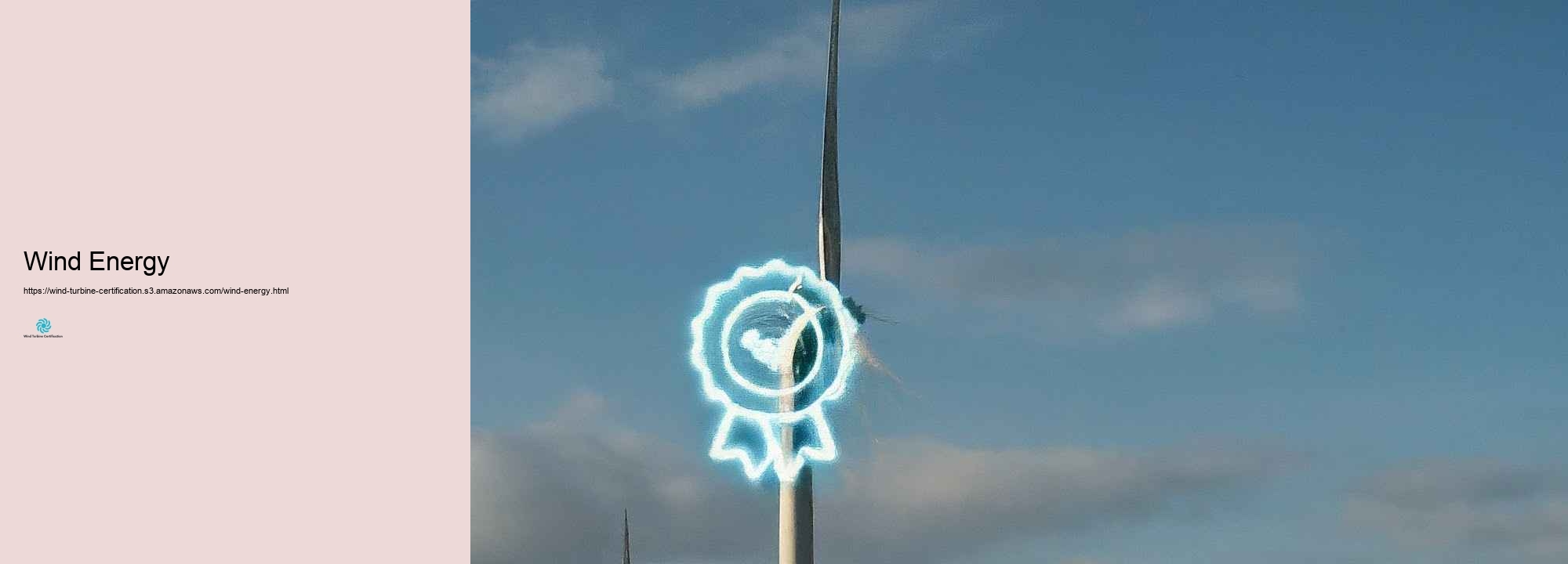
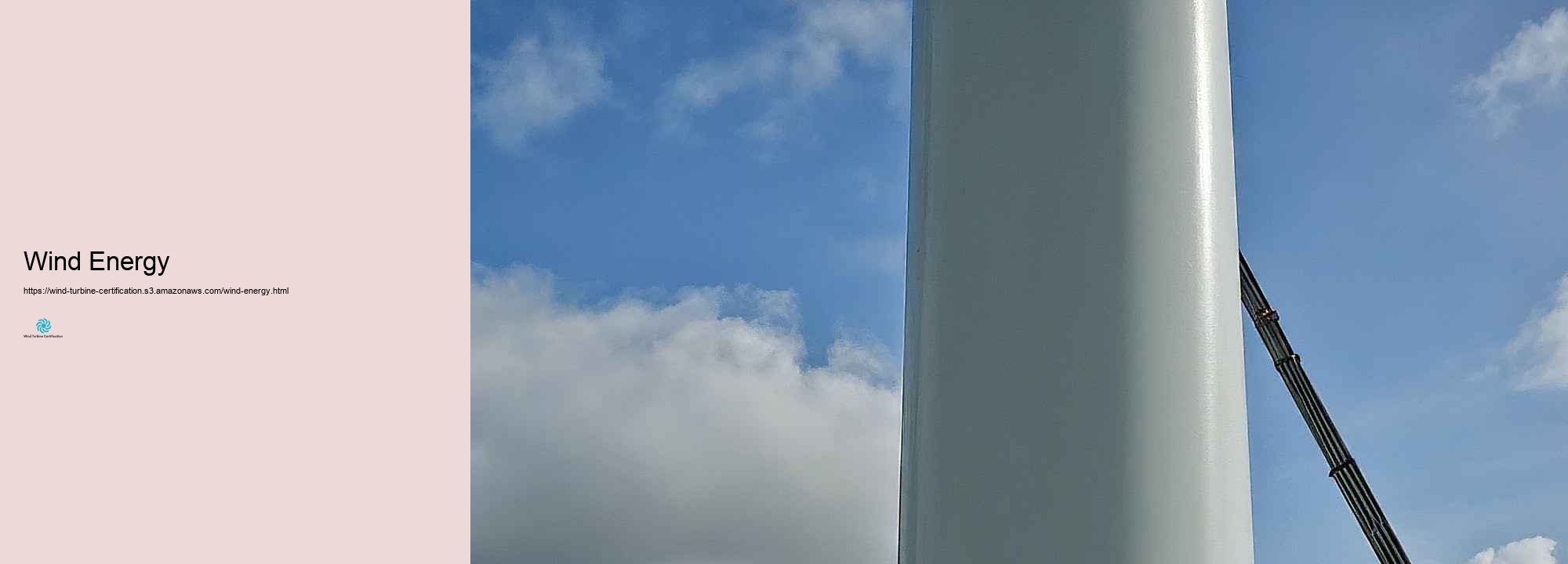
Wind turbine certification plays an important feature in ensuring the security and security and conformity of wind energy systems, contributing considerably to the market growth and public acceptance. This comprehensive treatment integrates various aspects of wind turbine layout, manufacturing, and procedure, all focused on minimizing hazards and maximizing performance in the challenging settings where these structures are deployed. At its core, wind turbine certification has to do with confirming that a turbine satisfies specific criteria and needs established by governing bodies and sector companies. These criteria cover a range of factors, consisting of building stability, electrical systems, control mechanisms, and ecological effect. By adhering to these requirements, manufacturers and drivers can program their commitment to safety and security and stability, which is important for obtaining the rely on of financiers, insurance coverage carriers, and the public. Among the key concentrates of wind turbine certification is building security and safety. Wind turbines are revealed to extreme weather and need to take on high winds, disturbance, and in a lot of cases, seismic activity. Certification procedures include extensive screening and analysis of the turbine's building parts, such as the tower, nacelle, and blades. These tests mimic various great deals problems that the turbine could experience throughout its operational life time, guaranteeing that it can withstand these pressures without failing. Blade certification is an especially crucial element of this procedure. Wind turbine blades undergo huge anxieties and require to preserve their integrity over various cycles. Certification for blades includes both static and vibrant great deals evaluating, along with fatigue screening to replicate long-term usage. Advanced strategies such as ultrasonic scanning and acoustic emission screening are usually used to find any type of kind of internal troubles or weaknesses in the blade framework. Electric system certification is one more critical element of wind turbine security and safety and security. This includes evaluating the generator, power electronics, and grid connection systems to guarantee they please security and safety demands and can run properly under various issues. Certification around additionally attends to issues such as electro-magnetic compatibility, ' protection versus lightning strikes, and the capacity to securely closed down the turbine in circumstance of grid failures or numerous other emergency situations. Control system certification concentrates on the software program and hardware that look after the turbine's treatment. This consists of analyzing the turbine ' s capacity to reply to changing wind problems, preserve maximum power outcome, and perform protection procedures when crucial. Certification in this area typically involves significant evaluating of the control solutions under various replacement situations to guarantee durable and trusted efficiency. Ecological consistency is an increasingly necessary element of wind turbine certification. This contains evaluating the turbine's noise discharges, darkness flicker influences, and feasible impact on wildlife, especially birds and bats. Certification procedures around aid make certain that wind turbines can exist side-by-side harmoniously with their bordering ambience and please regional laws relating to environmental monitoring. For offshore wind generators, certification takes on added measurements as an outcome of the severe aquatic atmosphere. This includes checking out the turbine's resistance to rust, its capability to withstand wave loads and aquatic development, and the sincerity of subsea structures or drifting structures. Offshore certification likewise addresses information safety issues related to water procedures, such as access to for maintenance workers and emergency situation response treatments. The certification treatment generally consists of many stages, beginning with a style evaluation. This phase contains a thorough review of the turbine's design papers, consisting of calculations, simulations, and technological pictures.
The wind power area has grown drastically over the previous couple of years, driven by the boosting demand for renewable energy sources. As the market expands, the value of assuring security and safety, dependability, and efficiency of wind generators has really ended up being extremely important. International certification bodies play a crucial function in this procedure by developing and applying standards that make sure the quality and safety and safety of wind generators. This brief article checks out the crucial worldwide certification bodies associated with the wind energy market and their duties in making sure compliance with international standards. The International Wind Organisation (GWO) is a philanthropic market organization established by leading wind turbine manufacturers and drivers. GWO's primary unbiased is to complete an injury-free workplace in the wind turbine market by means of the execution of typical international requirements for security training and emergency situation treatments. GWO standards are created by the industry, for the industry, guaranteeing that they are practical and efficient in improving safety and sustaining labor force development. GWO provides different training requirements, including Basic Security Training( BST), Requirement Technical Training(BTT), and Advanced Rescue Training(ART ). These needs are developed to guarantee that wind turbine experts have the crucial abilities and expertise to implement their jobs firmly and effectively. Certification bodies like NSF International Strategic Registrations (NSF-ISR) and ClassNK supply GWO certification to training carriers, seeing to it that they fulfill the required needs and make use of ideal devices in a suitable setting. UL Solutions is an additional popular certification body in the wind energy market, identified worldwide for its competence in safety and security science. UL Solutions provides certifications for overseas drifting wind turbines, which are coming to be considerably crucial as the market transfers towards deeper waters. Their certification solutions consist of kind certification, part certification, and grid code consistency certification. These qualifications verify that wind wind turbines are created, tape-recorded, and generated in conformity with certain criteria and internet site problems, making sure safety and security and safety and security, integrity, and performance. UL Solutions in addition offers turbine life extension solutions, assisting owners make educated choices relating to procedures, upkeep, and repair to make best use of the value of operating wind possessions. Their involvement in many nationwide and around the world boards additionally emphasizes their commitment to shaping the future of wind power by means of much safer and a whole lot more secure and safe improvement. ClassNK is a respectable certification body that gives options based upon the worldwide training needs established by GWO. ClassNK usages certification for training providers based upon all GWO training criteria, including BST, BTT, ART, and specialized programs like Blade Repair solution Training. Certified training carriers must go through annual keeping track of audits and recertification audits every 2 years to keep their certification. This extensive procedure makes sure that training meets the best standards, adding to an extra secure and a lot even more qualified workforce in the wind turbine market. NSF-ISR is just among the really first North American certification bodies to use GWO certification to training providers. Their auditors are professionals in the wind turbine field and can expect worries that might influence the audit experience. Certification shows that training companies perform training according to GWO criteria utilizing the essential tools in a suitable ambience. Licensed training business are thorough on the WINDA database, offering exposure to wind turbine owner drivers, producers, and industry specialists looking for training organizations. Worldwide certification bodies play an important role in ensuring conformity with worldwide criteria in the wind power sector. They develop and enforce considerable criteria that cover various facets of wind turbine style, production, installment, and procedure. These demands guarantee that wind generators are secure, dependable, and do preferably under different environmental problems. As an example, type certification validates that a wind turbine kind is made, documented, and made in conformity with details standards and website troubles. Aspect certification applies to major architectural, mechanical, and electrical parts of wind generators, validating that they accomplish applicable needs and technological requirements. Grid code conformity' certification warranties that wind generators satisfy national and global grid codes, assisting in their combination right into power systems. Wind Energy One of the main functions of international certification bodies is advertising safety and protection within the wind turbine market. By developing common worldwide requirements for safety and security training and emergency scenario treatments, these bodies help in reducing the risk of injuries and fatalities among wind turbine service technicians. As an instance, GWO's BST includes parts such as first aid, hands-on managing, fire awareness, operating at height, and sea survival.
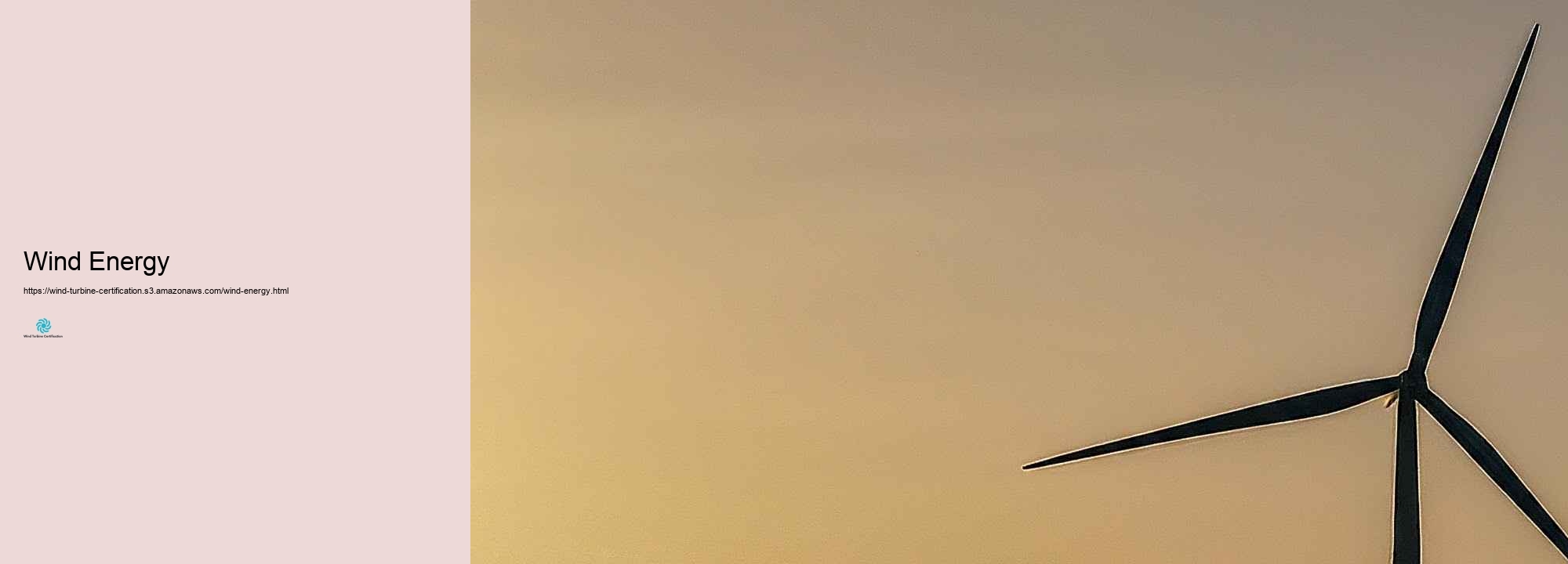
Wind Turbine Certification is a formal recognition that a technician or wind turbine system meets specific industry standards. It ensures safety, efficiency, and compliance with regulations, which is crucial for operating within the renewable energy sector.
Basic requirements include completing relevant training, gaining hands-on experience, and passing exams that test knowledge of wind turbine systems, safety protocols, and operational procedures.
The time required to become certified varies, typically ranging from a few months to over a year, depending on the program and the individual's prior experience.
Organizations such as the Global Wind Organisation (GWO), American Wind Energy Association (AWEA), and International Electrotechnical Commission (IEC) provide Wind Turbine Certification.
Obtaining Wind Turbine Certification enhances your credibility as a professional, opens up job opportunities in the wind energy sector, and ensures you are equipped to meet industry standards and safety requirements.